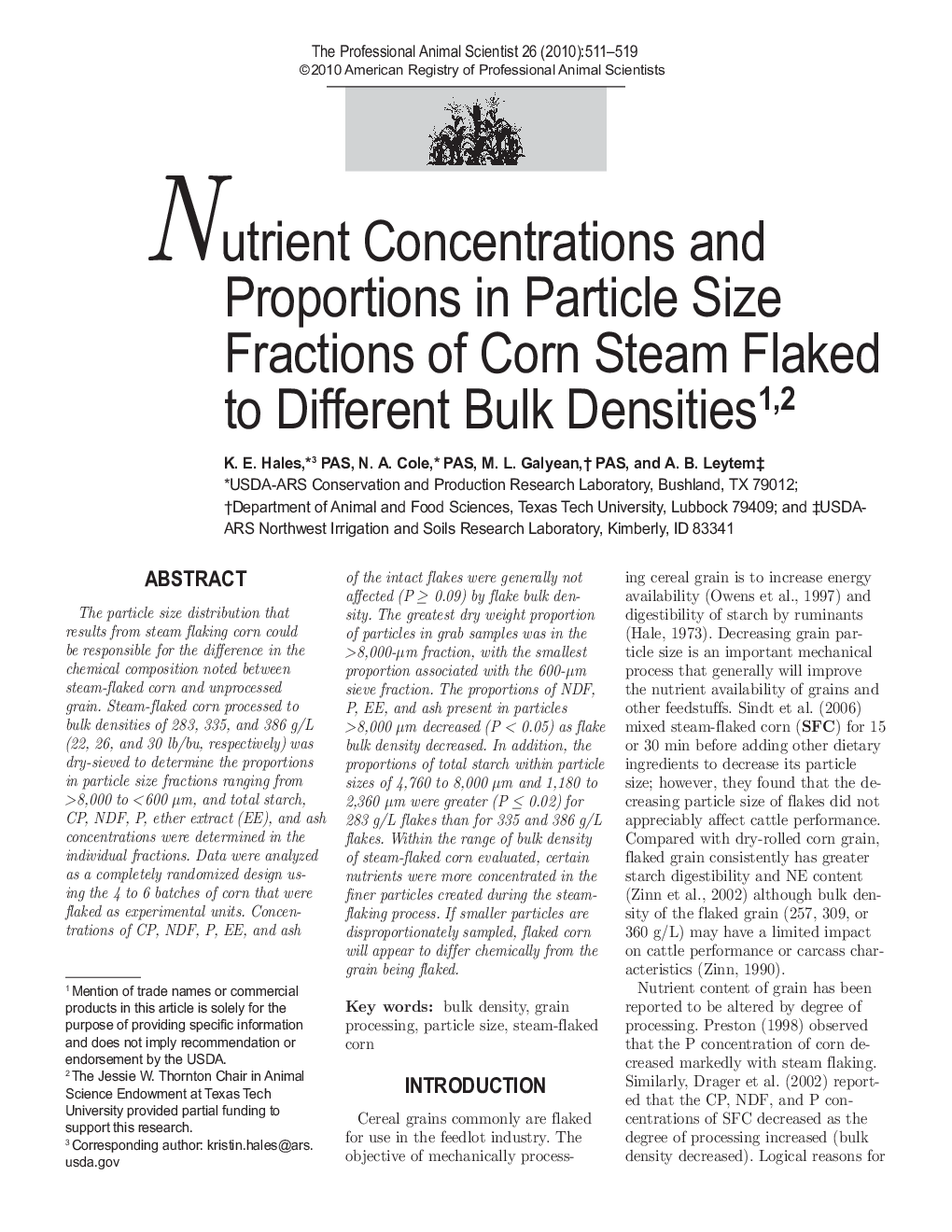| Article ID | Journal | Published Year | Pages | File Type |
|---|---|---|---|---|
| 2453988 | The Professional Animal Scientist | 2010 | 9 Pages |
Abstract
The particle size distribution that results from steam flaking corn could be responsible for the difference in the chemical composition noted between steam-flaked corn and unprocessed grain. Steam-flaked corn processed to bulk densities of 283, 335, and 386 g/L (22, 26, and 30 lb/bu, respectively) was dry-sieved to determine the proportions in particle size fractions ranging from > 8,000 to < 600 μm, and total starch, CP, NDF, P, ether extract (EE), and ash concentrations were determined in the individual fractions. Data were analyzed as a completely randomized design using the 4 to 6 batches of corn that were flaked as experimental units. Concentrations of CP, NDF, P, EE, and ash of the intact flakes were generally not affected (P â¥Â 0.09) by flake bulk density. The greatest dry weight proportion of particles in grab samples was in the > 8,000-μm fraction, with the smallest proportion associated with the 600-μm sieve fraction. The proportions of NDF, P, EE, and ash present in particles > 8,000 μm decreased (P < 0.05) as flake bulk density decreased. In addition, the proportions of total starch within particle sizes of 4,760 to 8,000 μm and 1,180 to 2,360 μm were greater (P â¤Â 0.02) for 283 g/L flakes than for 335 and 386 g/L flakes. Within the range of bulk density of steam-flaked corn evaluated, certain nutrients were more concentrated in the finer particles created during the steam-flaking process. If smaller particles are disproportionately sampled, flaked corn will appear to differ chemically from the grain being flaked.
Related Topics
Life Sciences
Agricultural and Biological Sciences
Animal Science and Zoology
Authors
K.E. PAS, N.A. PAS, M.L. PAS, A.B. Leytem,
